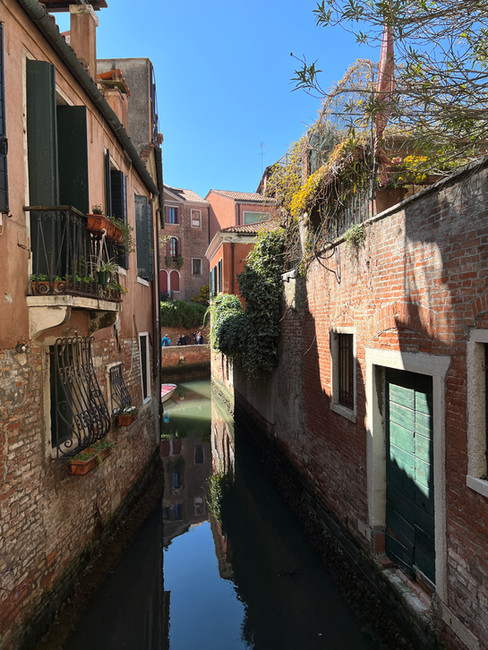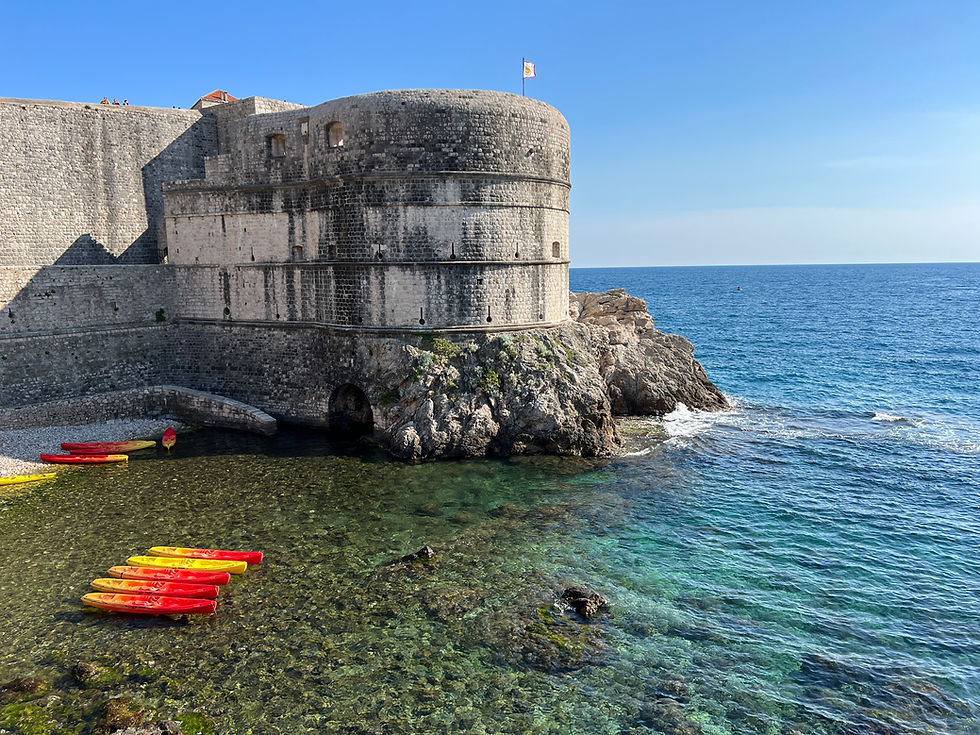A Local's Guide to Venice: Explore the City's Most Charming Neighborhoods
- Will Gerson
- May 20
- 4 min read
Updated: Nov 22
Venice is famous around the world for the beauty of its unique design, made up of 118 islands separated by hundreds of canals linked together only by footbridges, where the sole modes of transport are by boat or on foot. Its image is well known even to those who have never traveled there: picture a gondola passing under the Rialto Bridge along the Grand Canal, or a flooded Piazza San Marco reflecting the image of its namesake basilica and belltower.

Venice is nothing short of breathtaking, but it can get quite crowded as well, with throngs of tourists shuffling slowly along its narrow, picturesque streets. But the city is more than just its most famous landmarks: the hundreds of little islands each offer their own charm, and you can find plenty of hidden secrets if you know where to look. Here is a guide to help you explore the city from a more local perspective, visiting places off the beaten path, where you can engage with the living and breathing culture of the city.

Cannaregio
The northernmost of Venice’s six sestieri (historic districts), this part of the city has a much more local feel and makes for a great place to stay during your visit, removed from the tourist crush of the center. While the city’s rich and powerful built their opulent palazzi along the Grand Canal, Cannaregio developed as a working class and manufacturing area as early as the 11th century. This area is home to charming old Ghetto Ebraico, where Jews were forced to live by the republic beginning in the 16th century. Venice’s Jewish Ghetto, which was guarded by gates with entry and exit restricted after dark, is the origin of the English word ‘ghetto,’ although its pleasant and historic streets today are a far cry from the modern meaning of the word.
The canal known as the Rio della Misericordia runs through the heart of the district and is lined with fantastic establishments for food and drink of all kinds. A morning cappuccino or afternoon espresso at Torrefazione Cannaregio, a late afternoon glass of wine at Vino Vero, a pizza to go from Da Zorma, or a gelato from Bacaro del Gelato—you can’t go wrong with any or all of these choices.
Vaporetto
You’ll see plenty of selfie stick-wielding tourists paying top dollar for a gondola ride, but you’re much better off taking the local route by hitching a ride on a vaporetto, the ferries that function as the city’s main mode of public transportation. The vaporetti go all over the city, but the classic ride for tourists is route No. 1, which takes you right down the Grand Canal for all the postcard views at a fraction of the price of a gondola. The best way to get around Venice is usually to walk, but I recommend the vaporetti for longer distances, outer islands, and of course classic views.

Campo Santa Margherita
Located in the southwestern sestiere of Dorsoduro, the Campo Santa Margherita is the heart of Venice’s university quarter, with students spilling out from the nearby Università Ca’ Foscari every afternoon to fill the cafes and bars that line the piazza. In years past, the square was a hub of radical left-wing activism; today, it is alive with a youthful energy that can be difficult to find in other parts of the city. I recommend coming in the afternoon and grabbing a table at one of the outdoor bars to watch the daily life of local Venice unfold.
Cantine del Vino già Schiavi
For another local drinking experience in Dorsoduro, head over to the Rio de San Trovaso canal and try to squeeze your way into this classic bacaro. Always buzzing with energy, this is a great place to try cicchetti, the classic Venetian snack consisting of small open-faced sandwiches with all manner of toppings. The different cicchetti will be on display at the counter, so you can choose whichever ones you like; be sure to wash them down with a small glass of wine, which the locals call ombra (shadow).
San Giorgio Maggiore
This small island, located south of the Piazza San Marco and reachable by vaporetto, is home to a Benedictine monastery founded in the 10th century. The monastery’s crown jewel is its grand Renaissance basilica, designed by the master architect Andrea Palladio. The island offers stunning views back across the water, particularly at sunset, immortalized in a series of paintings by Claude Monet.

Chiesa di San Francesco della Vigna
This church offers a slice of tranquility just a stone’s throw from the center of the city. Built on the site of an old vineyard (vigna), the Franciscan church has another outstanding Palladian facade, as well as a soaring campanile (belltower) visible from across the city and an enviable collection of religious artwork inside.
Arsenale di Venezia
The Venetian Republic was the most powerful of the Italian maritime republics of the Renaissance era, with a domain that stretched along the Balkan coast down to the Peloponnese, Crete, and Cyprus. Through its naval dominance, Venice was able to control key trade routes between Europe and the Orient, amassing great wealth that allowed the republic to strengthen its navy even more. The source of this naval power was right here at the Venetian Arsenal, opened in 1104, which is considered by some historians to be the world’s first factory, long before the Industrial Revolution would take hold of Europe.
The Arsenal was a massive complex, covering around 15% of the surface area of the city, and it was a meticulously organized and highly efficient endeavor that employed 16,000 people and was able to produce one finished ship per day. The Arsenal made use of an assembly line process and developed innovations that allowed the Venetians to maintain its dominance of the Eastern Mediterranean for centuries. Though the Arsenal has long since been retired—it is now houses a flood defense system that protects the city and the surrounding lagoon—it is an impressive reminder of the technological and military might that transformed the city into the beautiful sight that you see today.

Looking for more places to explore in the region? Visit our Veneto page here.





















